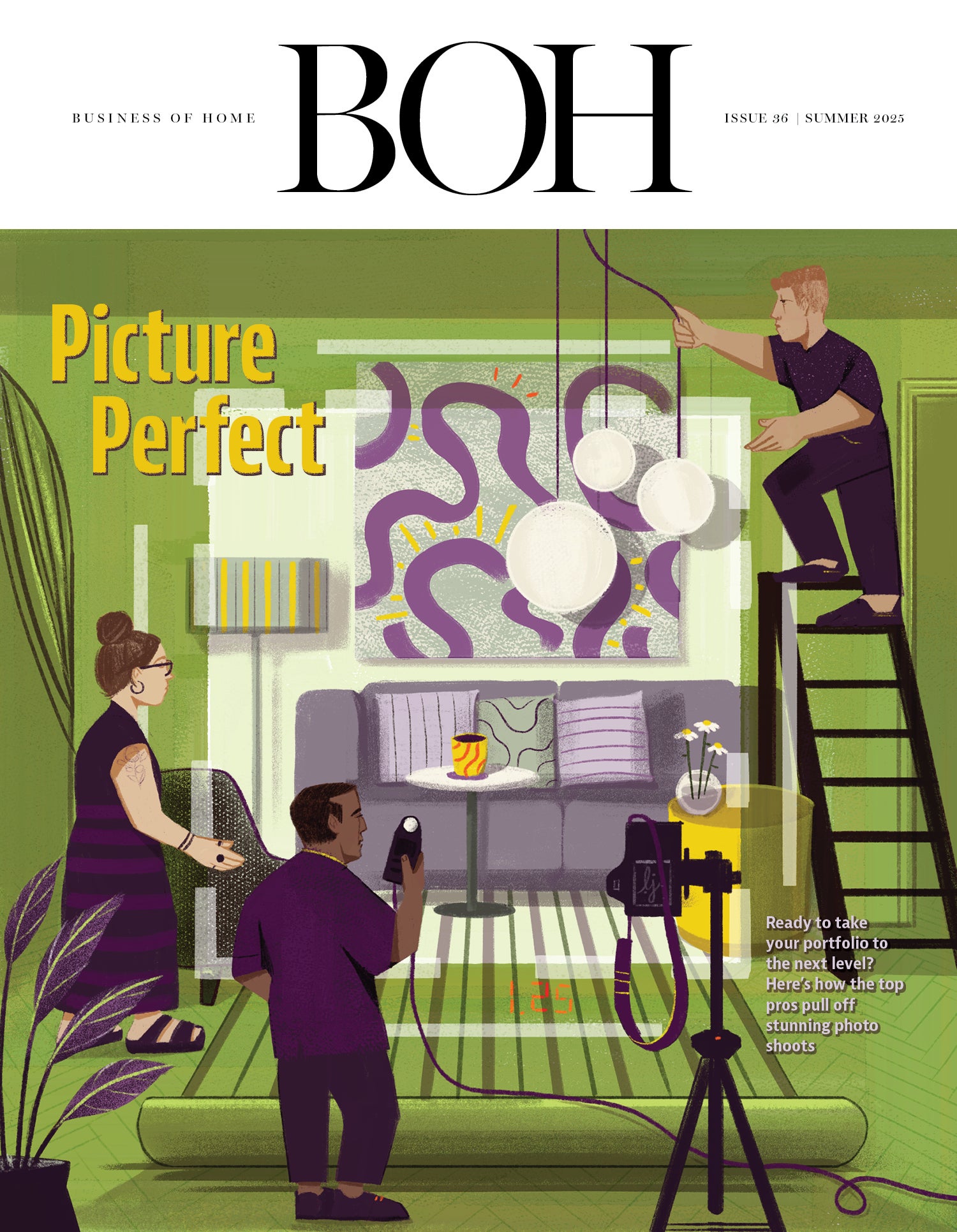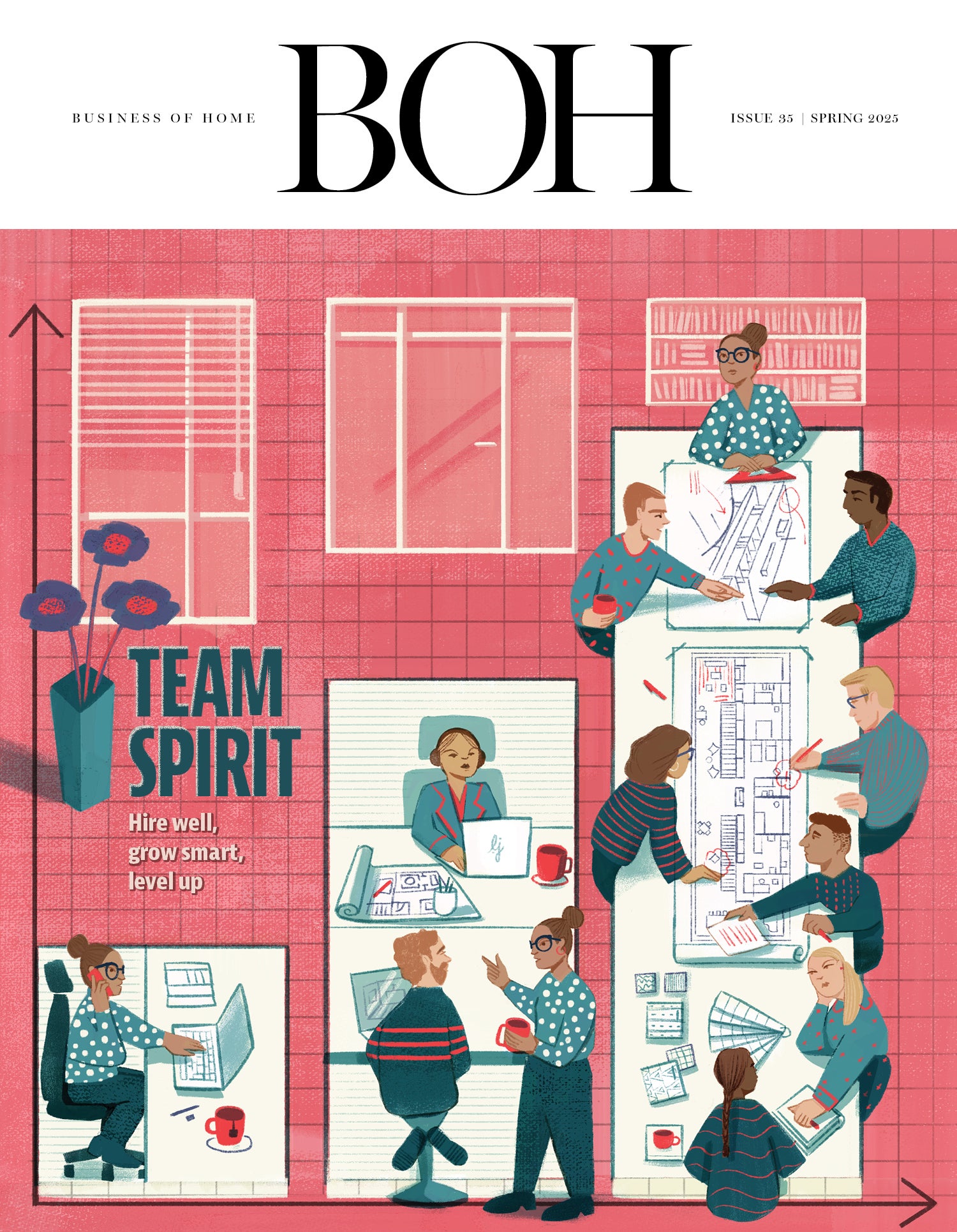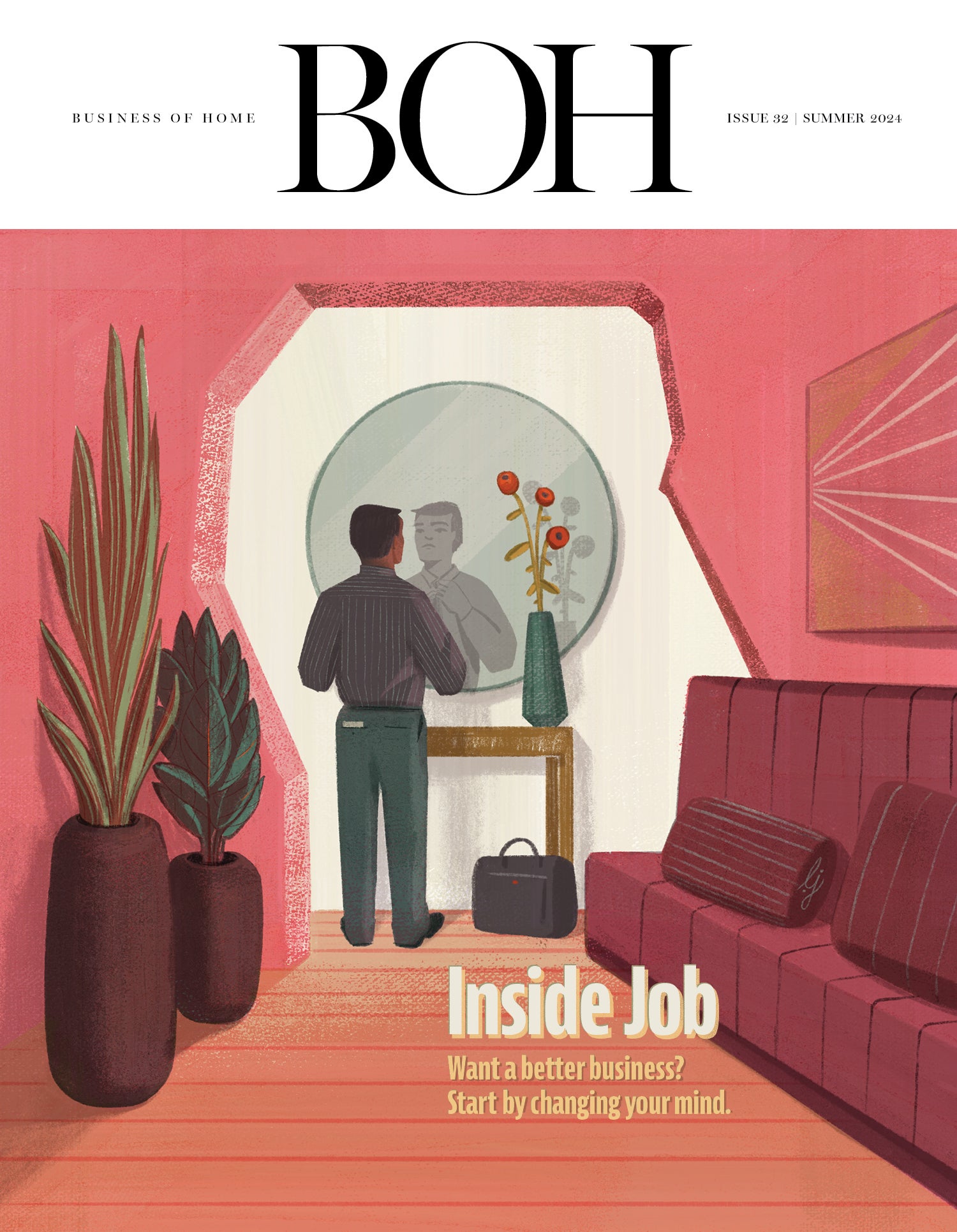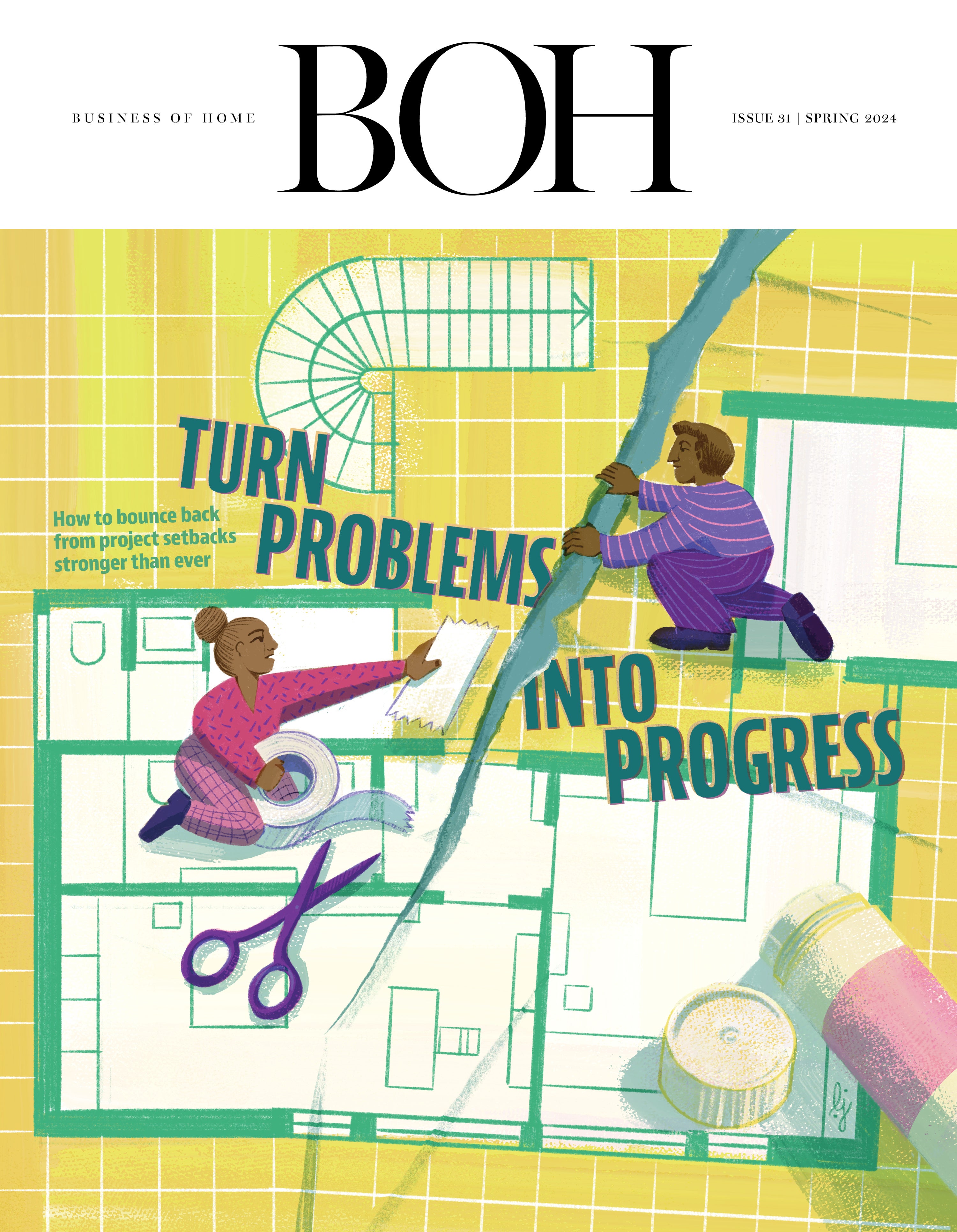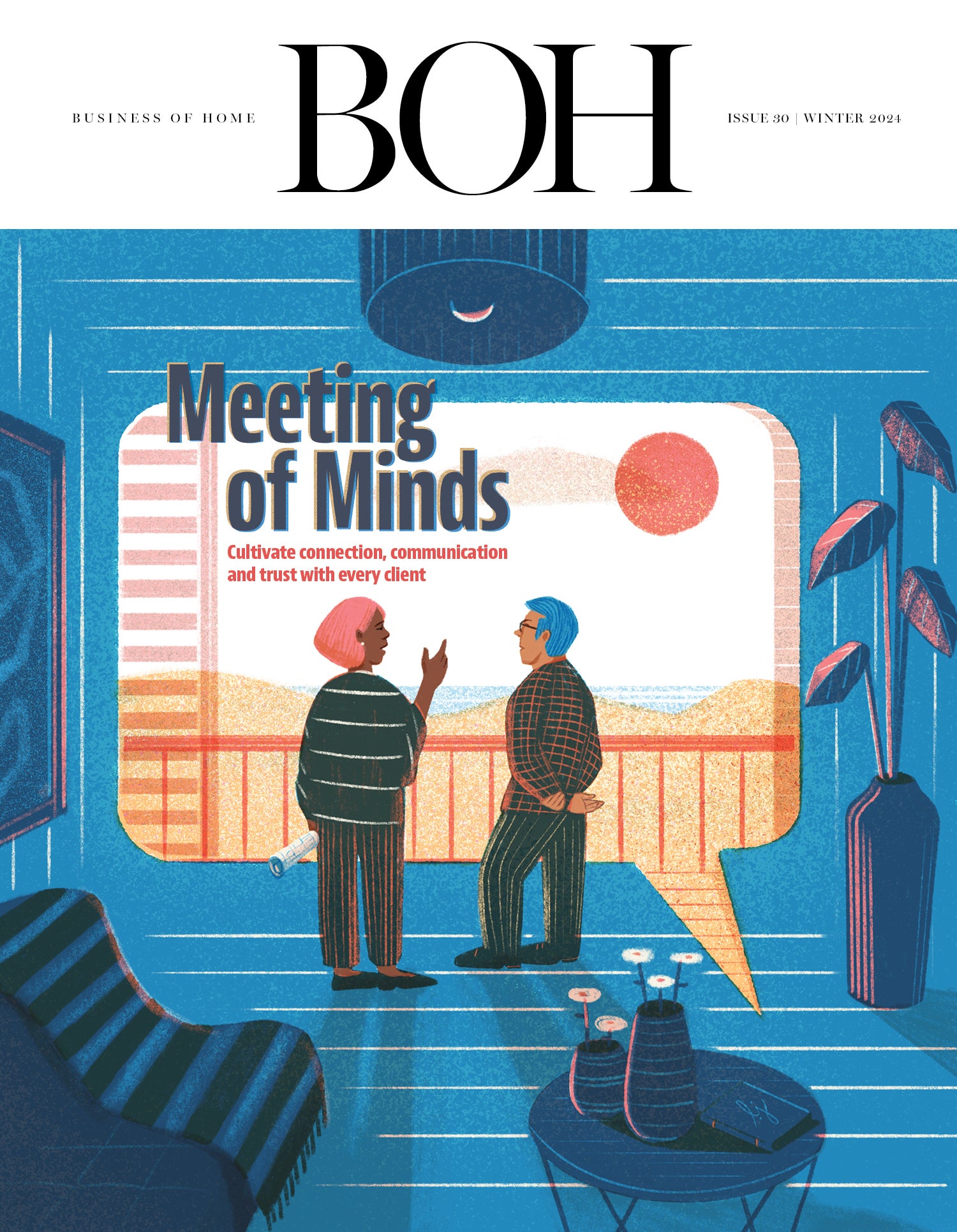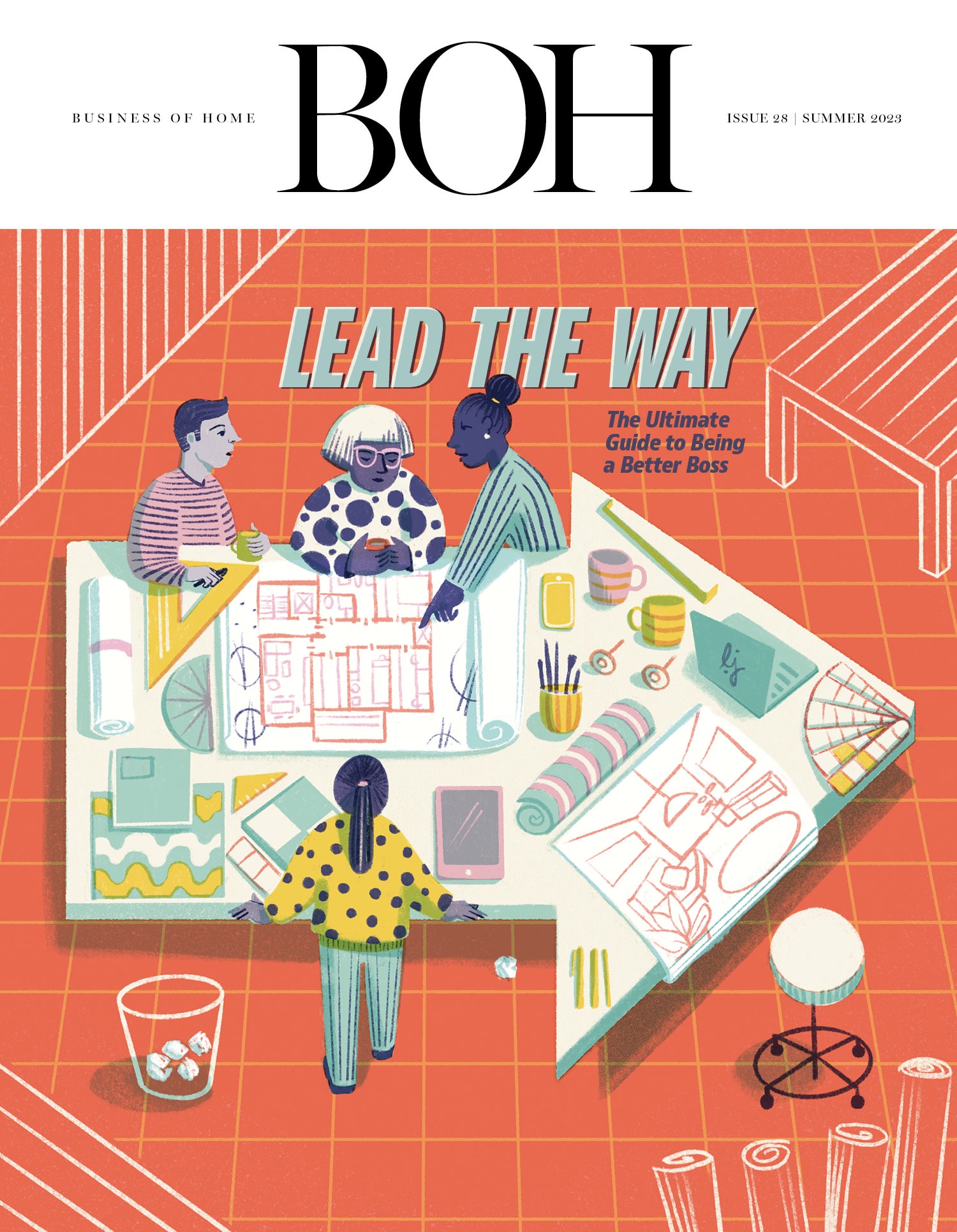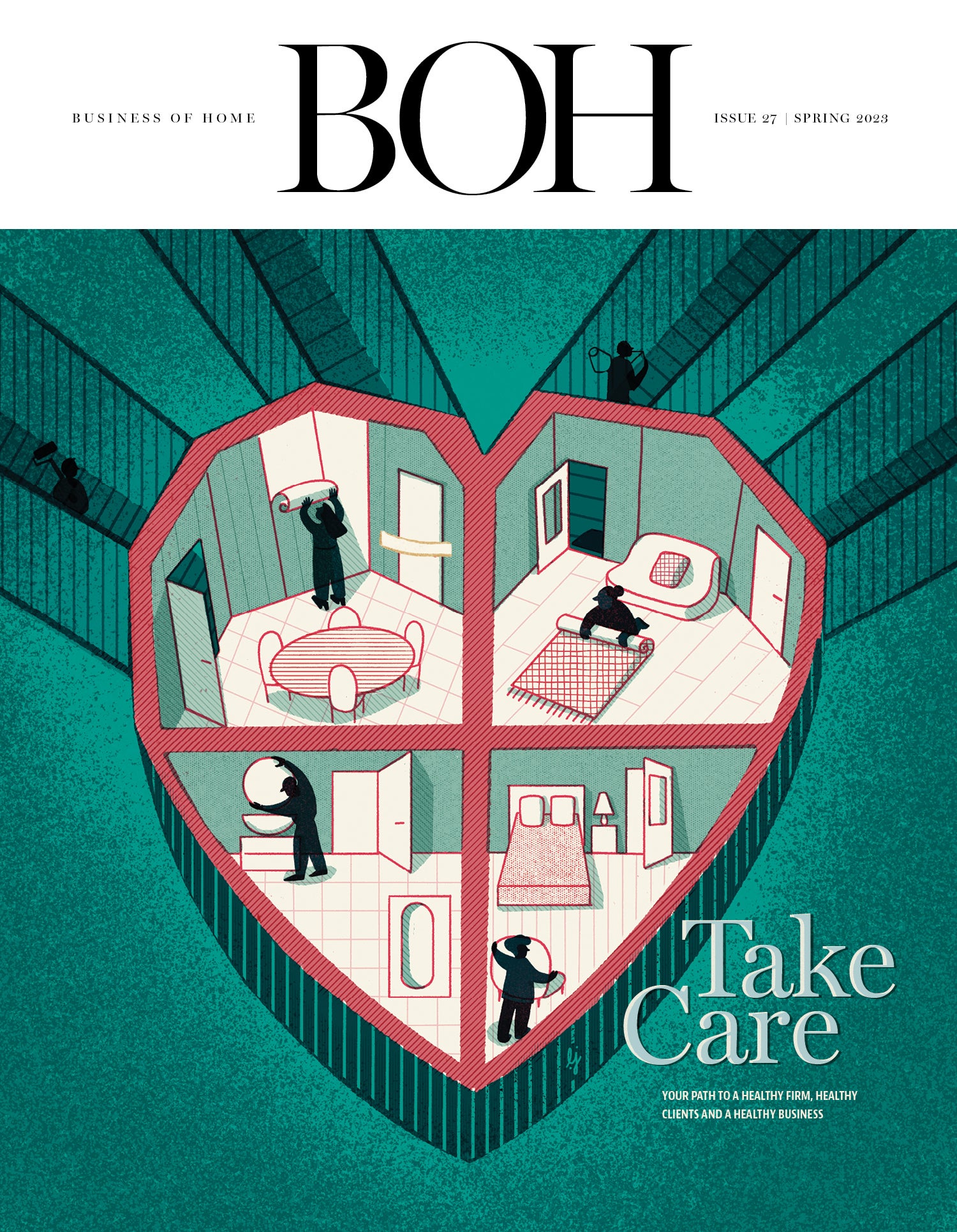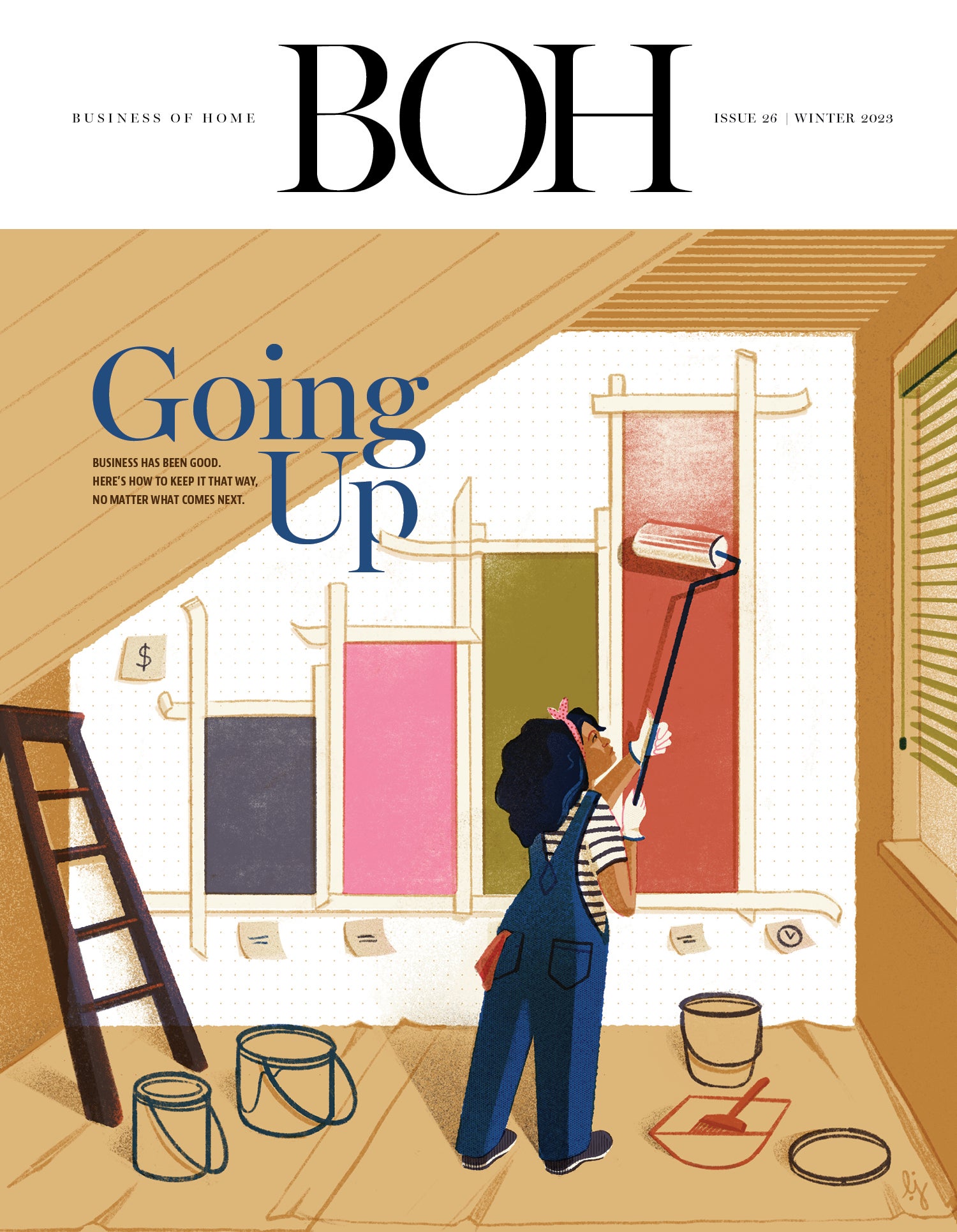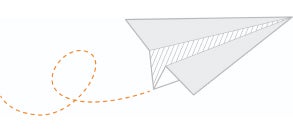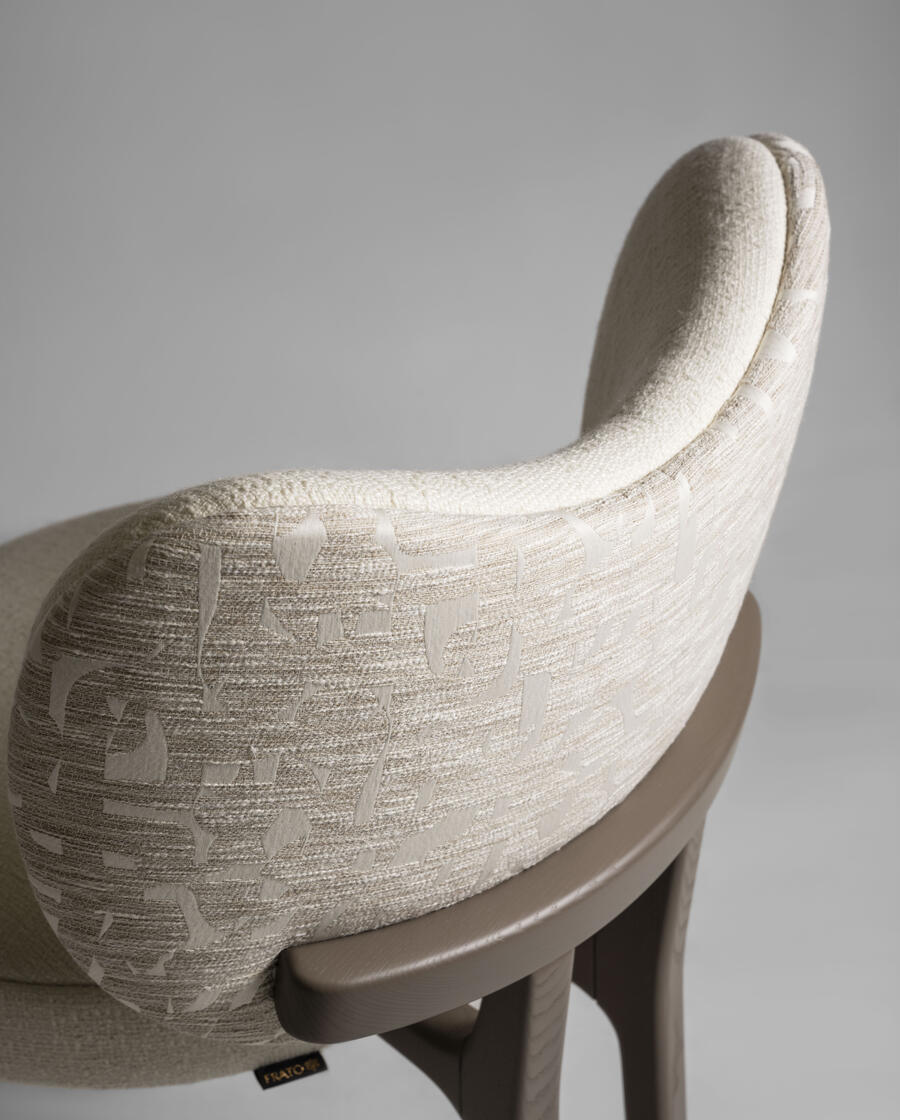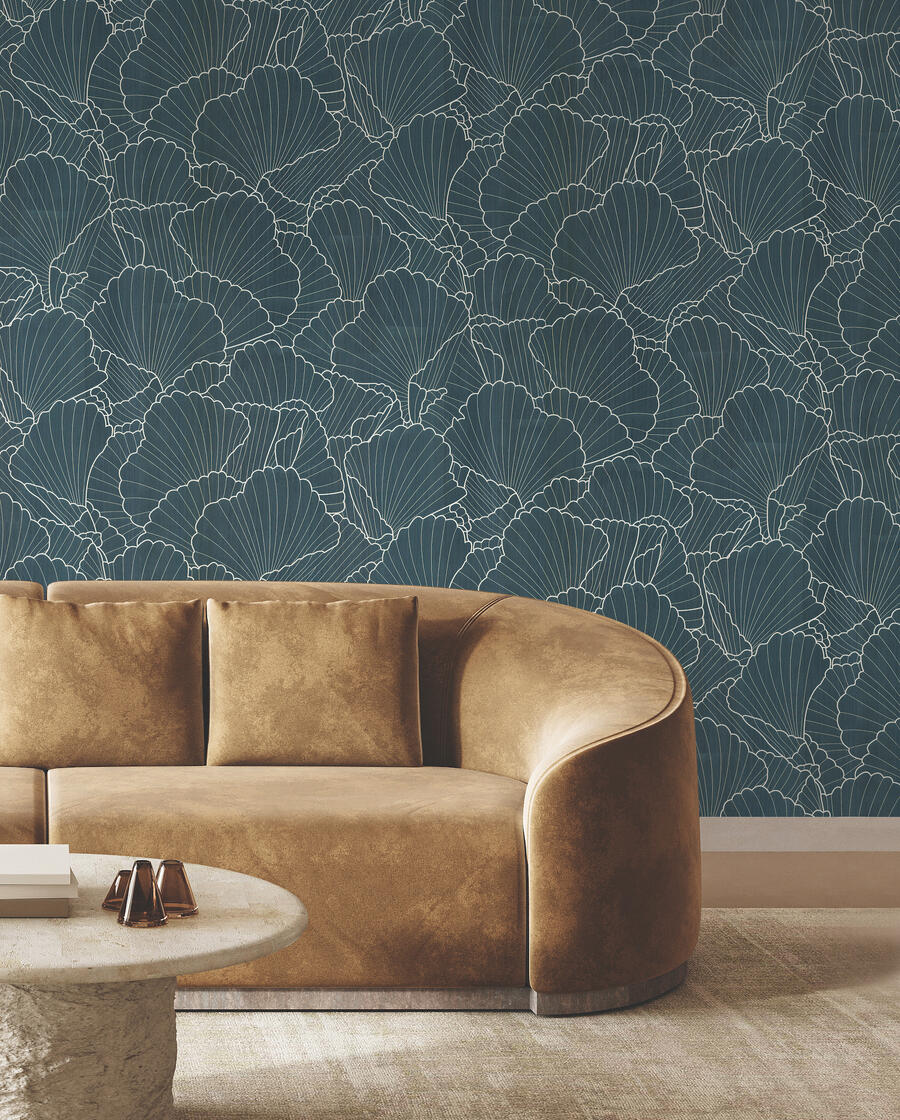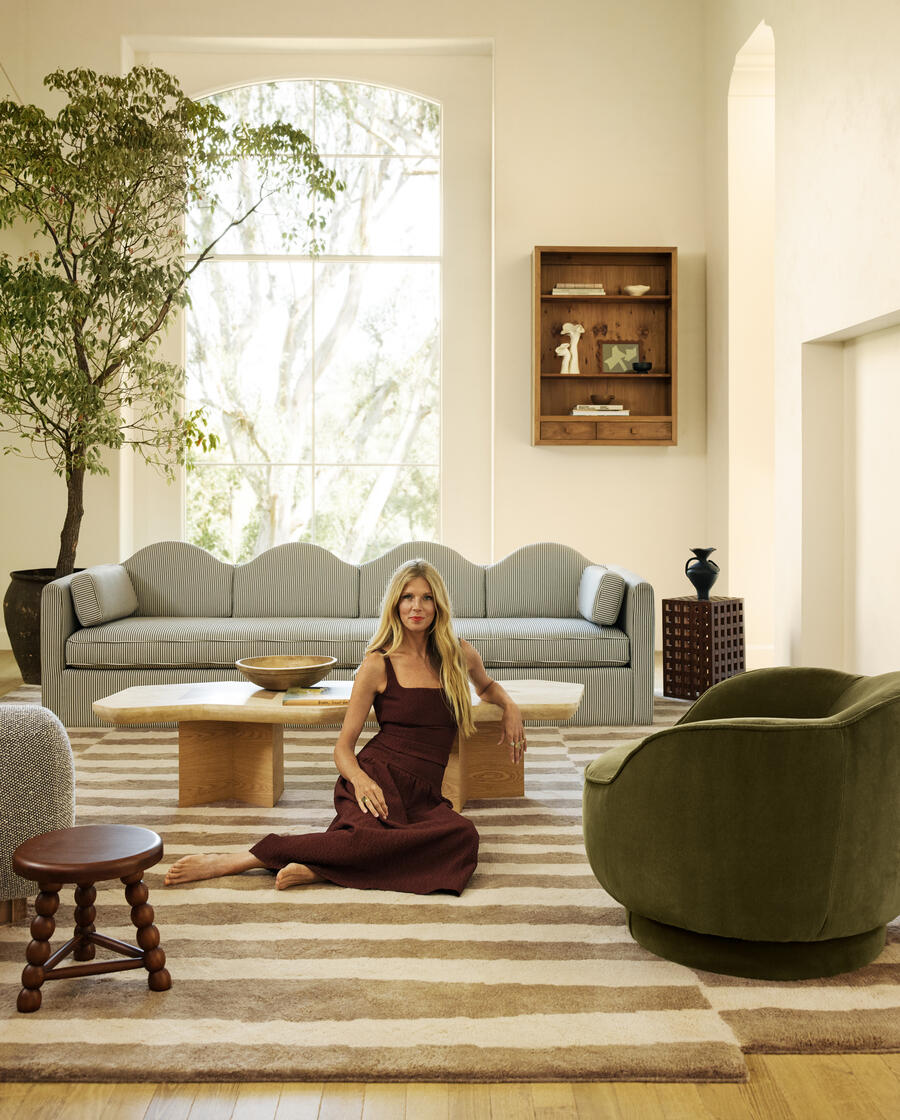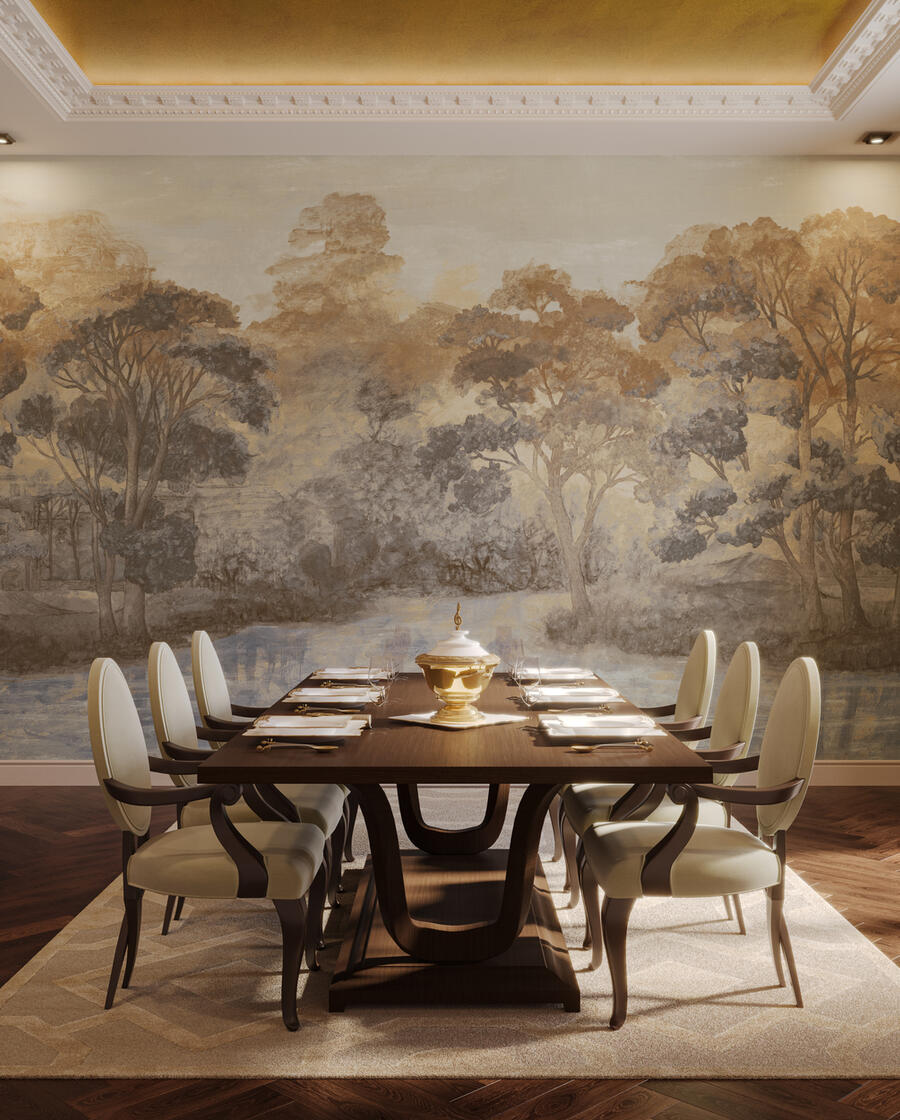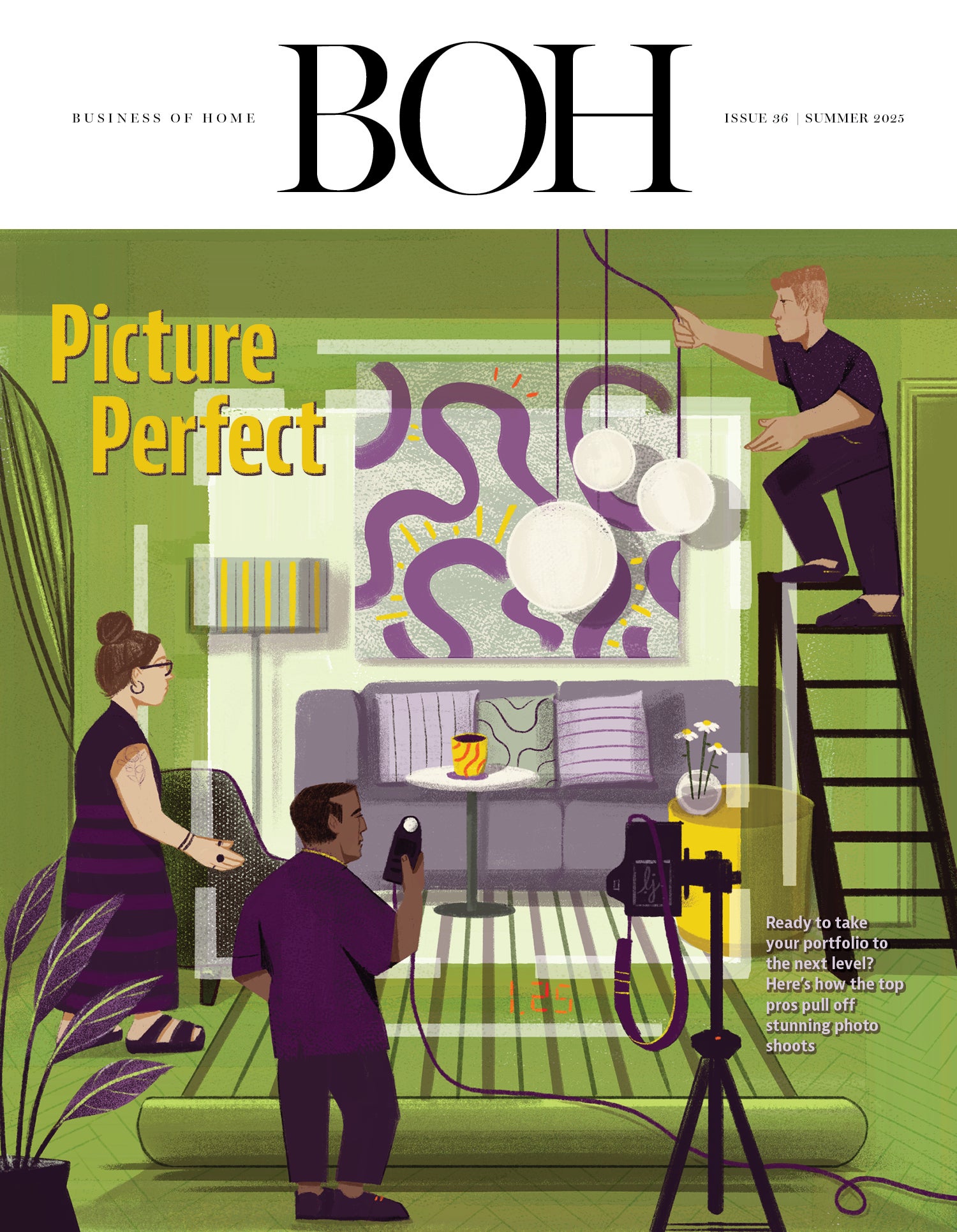Creative business coach Sean Low has been fielding designer questions for Business of Home since 2018. The industry has changed a lot since then—and so has Low’s industry-leading advice. With that in mind, he’s revisiting some of his early columns with fresh eyes, including this one on whether turning down smaller jobs is a lost opportunity. Here’s his take today.
Dear Sean,
Most of my projects are very high-end, with budgets always higher than $450,000. Lately, I have been getting inquiries from potential clients with significant budgets—let’s say up to $250,000—but still not enough for me, personally, to be able to do what I do. I have a staff of two junior designers and one project manager/administrator. I really do not want to let these projects go, but know I cannot do them myself. Can I turn these projects over to my team and just play a supervisory and approval role, or do I have to continue to turn them down?
Big Money
Dear Big Money,
Let’s approach your situation with a wide-lens view that will help inform how you move forward in this specific scenario. Years ago, I gave advice about how to build another business based on your primary design business. Back then, I stated that the new venture must fulfill four conditions: support your core design business and vice versa; sustain its pricing in the face of competition; reach critical volume fast enough to prevent distracting from your core design operation; and ultimately stand on its own without it. Given where we are in the industry and the opportunities that companies like The Expert have created for designers to generate extra income without all the operational burdens of a full-scale secondary business, I have lowered my four-part bar and revised my thinking to say designers like you can absolutely take advantage of industry side hustles. However, one of my original requirements still stands: You must say no to situations that could be a distraction from your main business—that is, no “design light” style work, please.
I remain adamant that the work has to slice off the top and not the bottom, meaning that the venture has to celebrate your design firm’s superpower—not what every other designer does. The Expert works because what lives between a designer’s ears is always the most valuable asset a designer has on offer. Styling, sourcing, project management and purchasing are necessary but never dispositive. There are too many players offering these services, and the vast majority of them are competent, if not fantastic, at these tasks. Simply, their businesses are tooled for the volume and logistics necessary to be successful. Most design firms that focus on larger projects are not. So leave these less rare and more easily replicable services out of your “extra income” ideas.
Let’s discuss scope and time of additional business. Scope of work is a term that is thrown around in the industry, but is misunderstood, in my mind. We think of it as a single container, when it really is more like nesting boxes than a series of individual boxes. A kitchen design may be the big-picture project scope, but what will be included? For larger projects where you are doing everything, defining scope matters much less. However, when you are beginning to offer a new service, these details matter a ton. If you are not there to specify lighting and flooring, that contingency must be stated, or you will be in the awkward position of having to do the work but not having the ability to keep it under control. The venture must have the large container (the kitchen) and what will be provided within that container and in what order (for example, finishes, cabinetry and plumbing, but not lighting, flooring or window treatments).
With scope specified, time becomes critical. You must define the process of delivering each module of the scope, the timetable for that delivery and the gap before the next one. For instance, you will have a meeting to discuss the kitchen and its elements; you will meet two weeks later to discuss finishes; and any follow-up will happen within one week. You will then meet to discuss cabinetry two weeks after finishes are complete, and so on.
All of which brings me to the most important aspect of this venture: You must use no hourly charge framework and allow no open-ended possibilities. You can charge an overall fee for the scope, and if extra services are needed, add a meeting fee with the specific understanding that there will be limited extra meetings. For instance, there will be three meetings as specified to offer advice on (and deliverables for) the kitchen for $20,000, and if another meeting is necessary, that one will cost $5,000. The goal is to prevent the marginal cost of your services from being so low as to actually encourage scope creep and delay. The entire point of the “extra income” opportunity is to have it contained and available when needed, but never a distraction for more than a month or so.
Marginal cost is where most designers go down the proverbial no-decision vortex and wind up resenting everyone and everything about a project—the client most of all, who’s blamed for being indecisive when the designer was the one who (unknowingly) created the behavior. If you spend, say, 200 hours at a rate of $200 per hour to create an amazing design, you have to acknowledge the value of the $40,000 spent and earned. You did a great job and were paid for it. So what is the cost of doing the next thing for, say, an hour? $200. Even if your client loved the sofa you showed them, having you spend an hour to show them a few more makes a ton of sense from their perspective. It is only another $200, after all. And around and around you go, until they wind up choosing the sofa you showed them in the first place. Having a meeting fee would mean that the cost of seeing another sofa will be $5,000—and therefore, the client’s choice to have you do this much more considered work is unlikely (unless the sofa is a complete miss, which would be a whole other conversation).
For larger projects, low marginal cost of services is frustrating. For side hustles, it is a recipe for disaster in the form of distraction, endless creep and blurred lines between this work and your core business. Just do not do it.
Last, if you adopt a different pricing structure than for your core business, you make it clear that the two are not the same, avoiding the conundrum of trying to make the pricing of your larger projects fit with that of the “extra income” work. Not the same sport, so keep them separate.
If all of the above can be accomplished, the extra work can be a terrific filler, like a band playing a smaller venue before embarking on the world tour. A highly contained slice of the best of you and your team that can be really valuable to all involved. And if the larger project(s) come along, you will know the supplemental work will end quickly thanks to your carefully devised framework, so as to not jeopardize the new core project. Think of it as my spin on The Expert—larger, with more leverage and, yes, more money. Good luck.
____________
Sean Low is the go-to business coach for interior designers. His clients have included Nate Berkus, Sawyer Berson, Vicente Wolf, Barry Dixon, Kevin Isbell and McGrath II. Low earned his law degree from the University of Pennsylvania, and as founder-president of The Business of Being Creative, he has long consulted for design businesses. In his Business Advice column for BOH, he answers designers’ most pressing questions. Have a dilemma? Send us an email—and don’t worry, we can keep your details anonymous.



